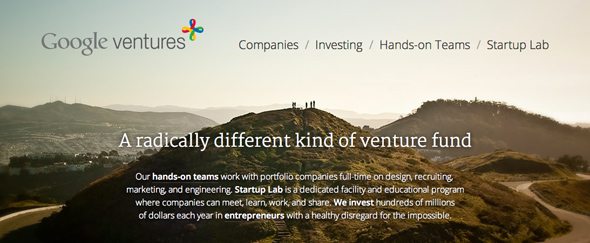Few days back Google Ventures released a new do-it-yourself guide for entrepreneurs and startups to help them solely focus on what it is they’re building.
Weird and compelling ideas keep hitting our mind more often. Before launching the real version, it is essential to get initial market feedback about its viability. Google wants to help startups design meaningful products by guiding them in the right direction.
Through this website, Google Ventures provide an ideal platform for startups to adopt a practical approach and work on different aspects in order to judge its full potential before investing time and efforts building it. The entire research process that takes months for a startup, is compressed to five days and hence named as a sprint.
Google Ventures has been conducting these design sprints with their portfolio companies, but now it has made it formal and public. A book compiling all these techniques is soon to be published on the website.
So what is the design sprint all about? It is a five day intensive, visual boot camp program where startups can make a sense of user needs, conceptualize solutions and make a detailed user story diagram to develop a product for market testing. At the end of this exercise, they’ll have the best concept and potential implementations possible. It is an exhaustive process that brings all the teammates on the same page, be it engineers, designers, and salesmen.
Day One: Unpack
Here the entire team discusses the problem to be solved, challenges faced and solutions on offer. Each team member shares their perspective, concerns and information that might be helpful for the future outcome of the end product. The purpose of Day one’s activity is to develop common product understanding. Take notes of the session that will help collaboratively map out the user story later.
Day Two: Sketch
After spending an entire day understanding the idea, now comes the time to take the next step. Also labeled as a “diverge” step, it helps to get a lot of ideas. Each team member be it an engineer or a designer starts to make a sketch of the solution in the individual capacity. The purpose of this exercise is to get ideas out of the head onto the paper. This “How We Might” session helps to bring about a number of solutions to address the problem at hand.
Day Three: Decide
On day three the team encounters a positive dilemma, to shortlist the best possible solutions. The key is to connect all the similar ones under a common theme and draw a connection between them. Here you need to mark the solutions that are more creative and offer proposed value. The selected ideas will be taken to the next phase.
Day Four: Prototype
Today the team members will be assigned specific roles in order to design a prototype within the given time frame. Enforce the time constraint and keep moving. Design a master wireframe incorporating all the features as agreed upon in the previous step. At this stage, the user story diagram is transformed into a real-looking version of the storyboard that will be the key to collecting useful customer feedback.
Day Five: Test
On the final day on the sprint, you step out of your room and interact with the customers. Present them the prototype and gather feedback. Some of the ideas will be an instant hit and others will fade away. List down the important questions to ask your customers and gather response that will be helpful in the iteration process.
That’s it. Congratulations, you’ve successfully completed the most important cycle in a startup’s life in just five days. If the MVP gets the green signal, now you can spend time building it. On the other hand, if the idea didn’t work well with the audience, then think of a better solution and start the cycle again. The best part about this process is the teamwork and involvement of all the members from idealization to launch so that all of them are on board and this understanding will help the team to transform great ideas into meaningful profitable products.


